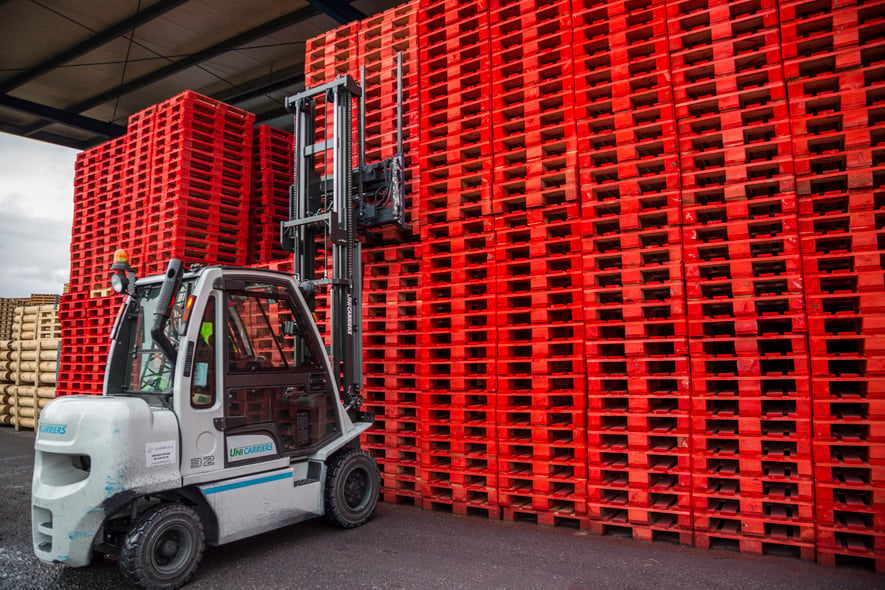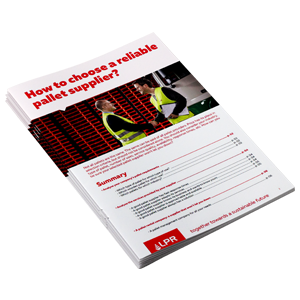Green logistics (sometimes referred to as Green Supply Chain Management) is an area of growing interest for many companies.
Green logistics covers the entire life cycle of a product, from its design and distribution, through to its eventual destruction. It focuses in particular on the environmental impact of transporting goods from point A to point B. Green logistics therefore encompasses the reduction of fuel consumption, waste creation, distances travelled, as well as the use of renewable resources, whenever possible.
But what does this mean for you and your business? And how can you start making changes today?
Quick Navigation:
II. Why you should make your supply chain more environmentally friendly
III. Solutions in the move towards green logistics
I. What is green logistics?
Green logistics is a popular subject. The solutions and innovations that make up the green logistics movement are increasing in importance to consumers and as such businesses are slowly realising that they can reduce their carbon footprint while saving money and doing their part in preserving the planet.
But what exactly is green logistics?
Green logistics refers to the practice of integrating an ecological approach into a supply chain so that it is more respectful of the environment. This means looking at the entire supply chain, from suppliers to customers, to find new ways to improve efficiency and reduce waste.
Green logistics can be implemented across the entire supply chain process. The term "green" can be applied to almost any type of business process or product. Nevertheless, it is most often associated with methods of transport and distribution.
For example:
-
Green trucking, which consists of using trucks powered by alternative fuels such as natural gas or biodiesel.
-
Green shipping, which involves using ships powered by wind or solar energy rather than traditional fossil fuels.
-
Green warehousing, which uses warehouses that consume less energy, are better insulated and have better natural lighting in order to reduce the need for heating, air conditioning and lighting, etc.
-
Rail freight, which allows more goods to be transported at a single time. Its energy is also cleaner, since most trains now run on electricity.
Broadly speaking, green logistics efforts focus on three key areas:
-
reducing greenhouse gas emissions
-
reduction of energy consumption
-
the use of renewable energy sources (such as solar or wind energy).
Green logistics also includes other activities such as increased recycling rates, improving product design, or developing waste management systems that minimise waste generation.
II. Why you should make your supply chain more environmentally friendly
By promoting ecology in your supply chain, you are not only doing good for the planet, but you are also doing good for your business.
Here's why you should choose green logistics:
-
It's good for customers: customers are increasingly looking for products that have been produced using sustainable and environmentally friendly methods. Companies that provide such products tend to have an edge over their competitors that don’t follow this approach, when it comes to attracting and retaining new customers.
-
It's good for suppliers: Your suppliers are likely to be adopting a greener approach and by adopting an environmentally friendly operation, you become more attractive to them.
-
It's good for long-term profits: investing in sustainability doesn't just help reduce your environmental impact. It allows you to anticipate the increasing number of regulations that your company will have to comply with in the years to come, thus. allowing you to future proof your business.
-
It's good for morale: employees who work for a positive impact company are more motivated and more productive at work. They find themselves working towards a common goal. This leads to greater efficiency, better engagement, greater innovation and can result in greater customer satisfaction. It also makes you more attractive to prospective employees too!

III. Solutions in the move towards green logistics
There are several ways to begin your move towards greener logisitics.
1. Act on your packaging
One of the most important things you can do to reduce waste in your supply chain is to prioritise sustainability.
You need to look for ways to make your products more environmentally friendly and your choice of packaging can be the one which has the biggest impact.
For example, when purchasing packaging materials, it is important to consider how they are made. If possible, choose products made from recycled or biodegradable materials, and keep packaging to a minimum for your products.
2. Use pallet pooling
Pallet pooling is a 100% outsourced pallet rental and management system. A particular advantage of pallet pooling is that pallets are provided on a rental basis.
In choosing a pallet pooling company, your company no longer purchases its own pallets. Instead, they are delivered on demand by a specialised service provider, where you pay according to your actual usage.
Finally, it is important that your pallets are made responsibly. At LPR - La Palette Rouge, all our pallets come from PEFC-certified forests, meaning that the forests they are taken from are sustainably managed. Each pallet is also regularly inspected, and repaired where needed, which considerably extends their lifespan.

3. Reduce waste from product design
Another way to reduce waste in your supply chain is to consider it during product design. By ensuring that each element of your product has a specific purpose, and that each part can be recycled or turned into a new resource, you are limiting waste, before, during and after product design.
At LPR - La Palette Rouge, pallets that are too damaged to be repaired are turned into pellets for heating or pet bedding. As a result, no raw material is wasted.
4. Use renewable energy
Using renewable energy can make your supply chain greener in many ways.
Global demand for renewable energy has increased dramatically over the past decade. However, there are still gaps between how much renewable energy is used currently and how much must be used to meet climate change goals. Your supply chain can help bridge this gap.
Your supply chain is a key element in the performance of your business. It keeps you competitive by ensuring that all materials, parts and equipment arrive on time and at the right level of quality, but it also has a significant impact on the environment as well.
By replacing fossil fuels with renewable energy sources in your supply chain management, you can positively impact both your bottom line and the environment.
For example, you could:
-
Use solar energy - by equipping the roofs of your warehouses and/or factories with solar panels.
-
Take advantage of wind power by installing a wind turbine.
-
Use biomass, which involves the combustion of organic materials such as wood.
-
Use biofuels. These are fuels made from plants.
-
Change your lighting for more environmentally friendly lighting solution.
There are many renewable energy solutions available, allowing you to select the most suitable option for your business.
5. Use more efficient means of transport
The use of biofuels leads us to talk about transport in the supply chain.
Transport is one of the highest contributors of greenhouse gases. In order to reduce the impact of transport on the environment, it is important to use the most efficient means of transport available. Of the possible modes of transport for your supply chain, rail still remains the most environmentally friendly.
Rail transport has a much lower environmental impact than other modes of transport:
-
Railways generally pass through towns rather than around them. Therefore, they make fewer detours, cover less miles and consume less energy.
-
Trains can carry more goods in fewer trips, reducing the total number of miles travelled. This makes rail more efficient in terms of goods per mile travelled.
-
Most trains today run on electricity, a cleaner energy than the fossil fuels (diesel) used by traditional trucks.
Finally, it is also important to consider switching to green technologies for your fleet of last mile vehicles, such as electric trucks. These vehicles use energy from renewable sources such as solar panels, and are much more efficient than gas guzzling vehicles!
There are additional ways to make logistics greener, including optimising distribution networks, routes, and the filling rate of trucks.
Conclusion
Green logistics make it possible to reduce the impact of the supply chain on the environment and is an approach growing in popularity day by day. However, companies working within it need to consider how they operate their business and how their activities can impact the supply chain as a whole.
If you would like to discuss your logistics issues with our business experts, you can contact them here. You can also access our other blog articles to learn more about the supply chain and pallet pooling.



